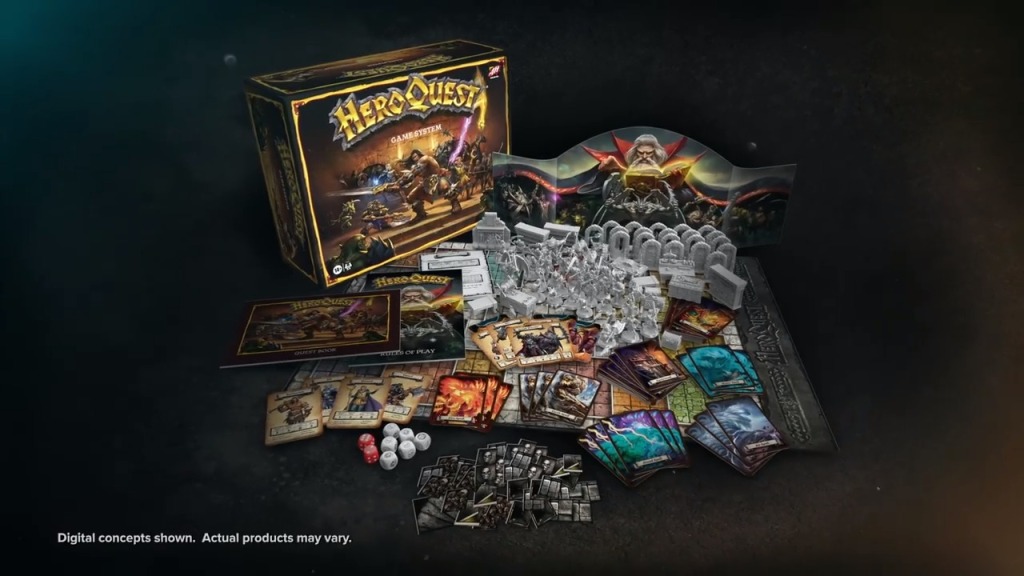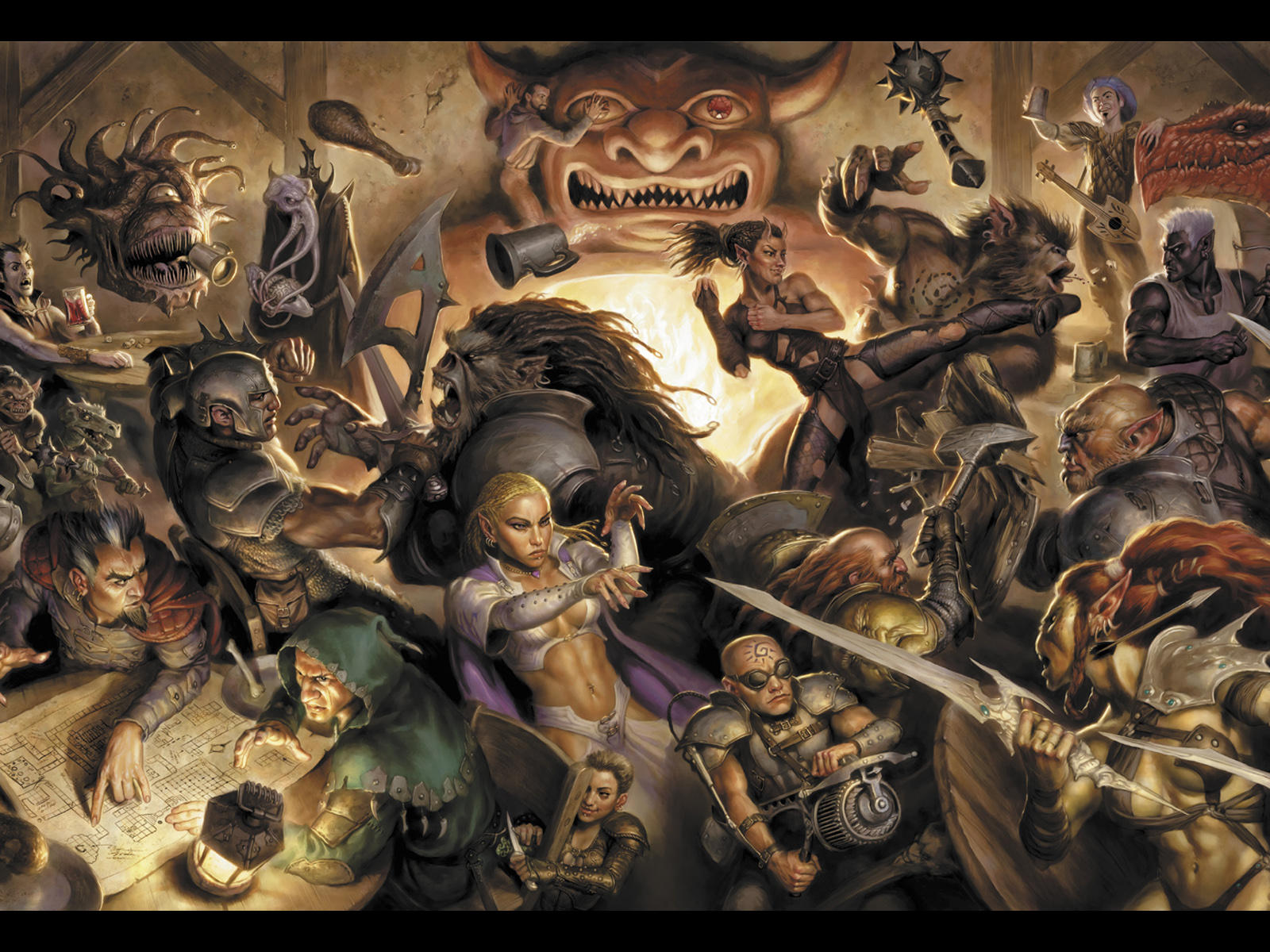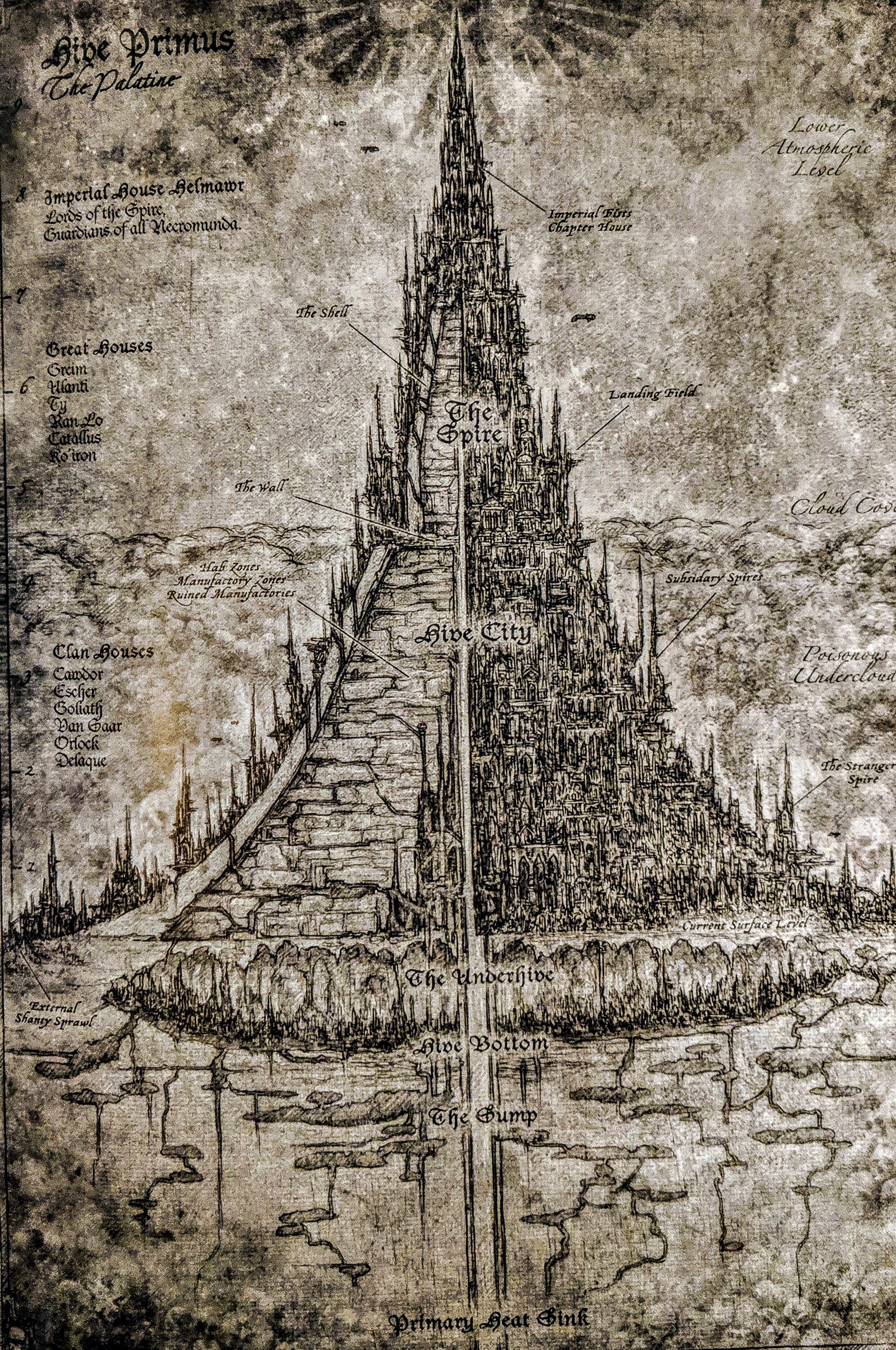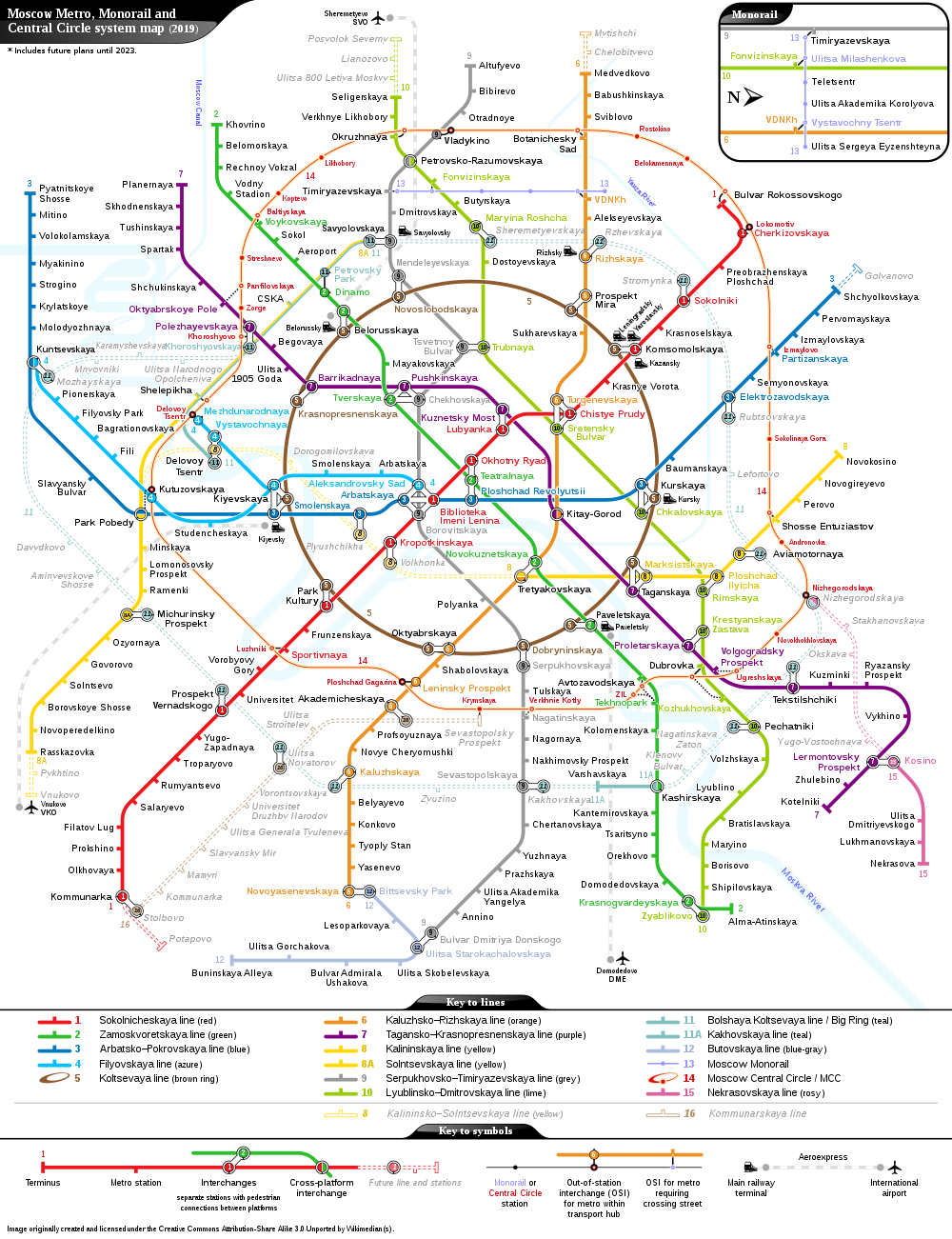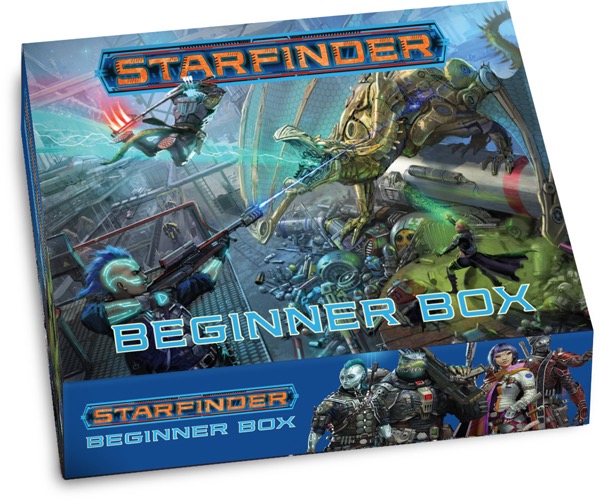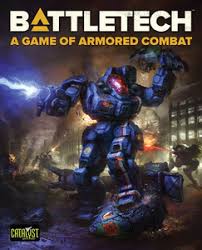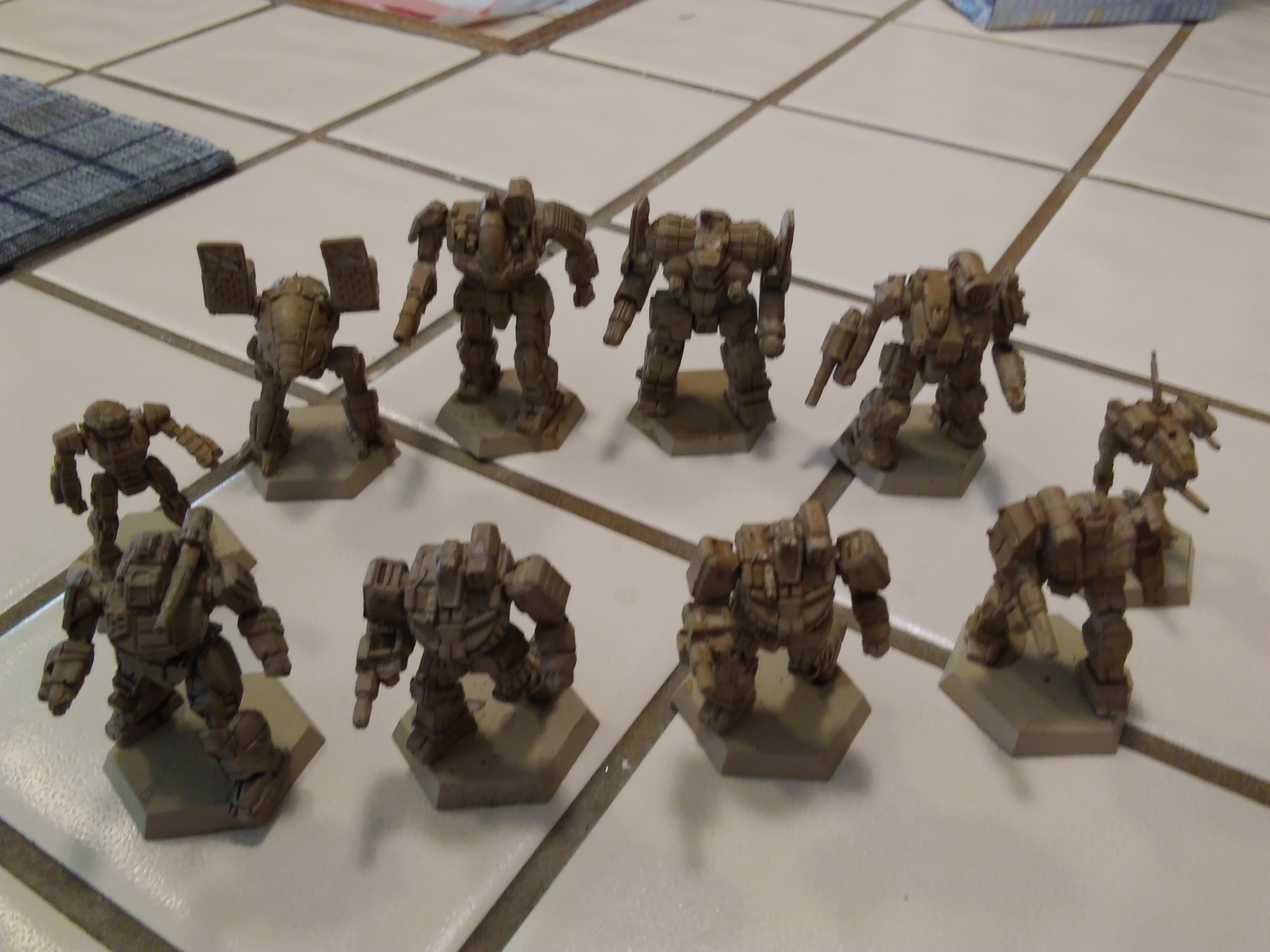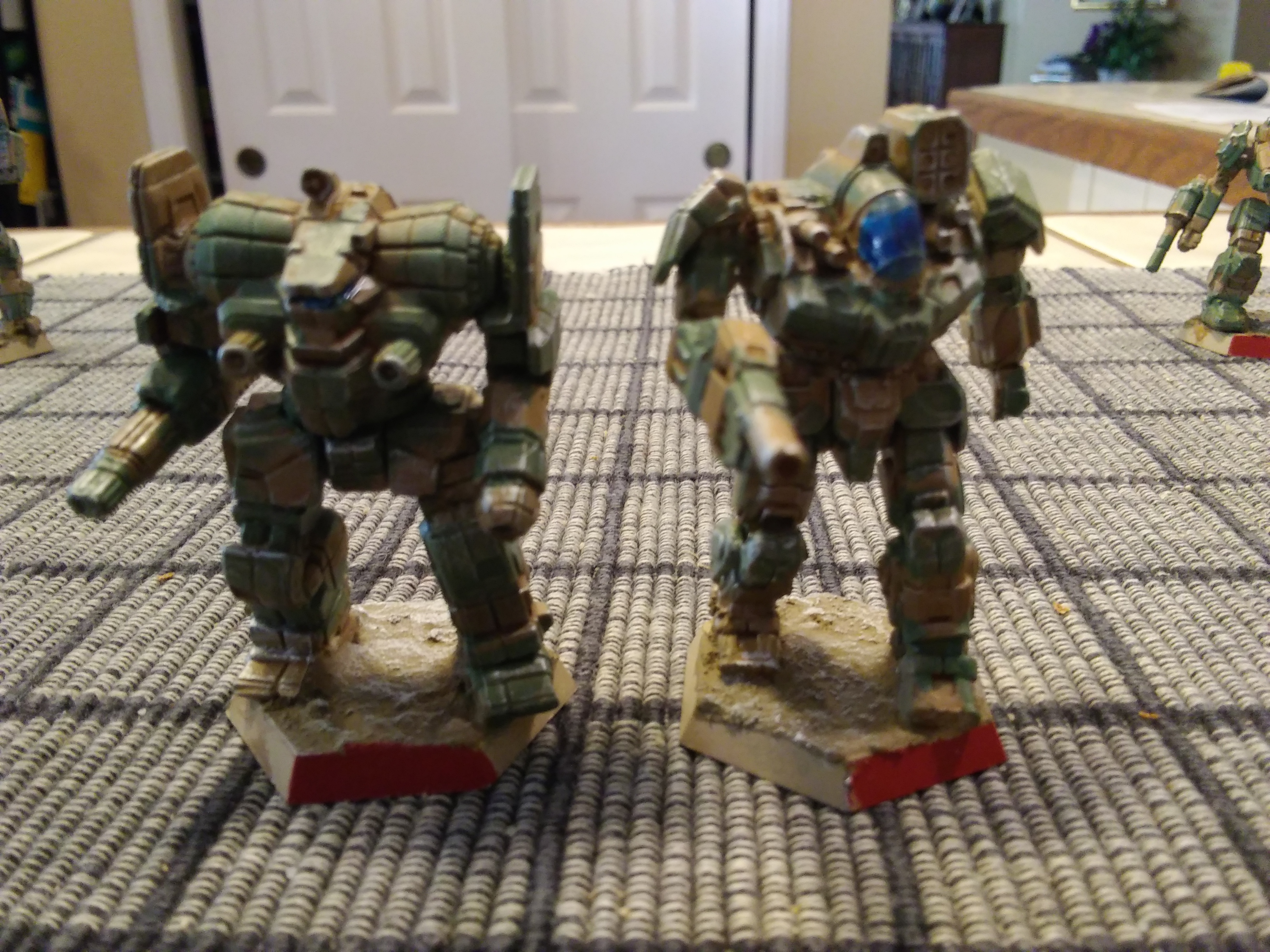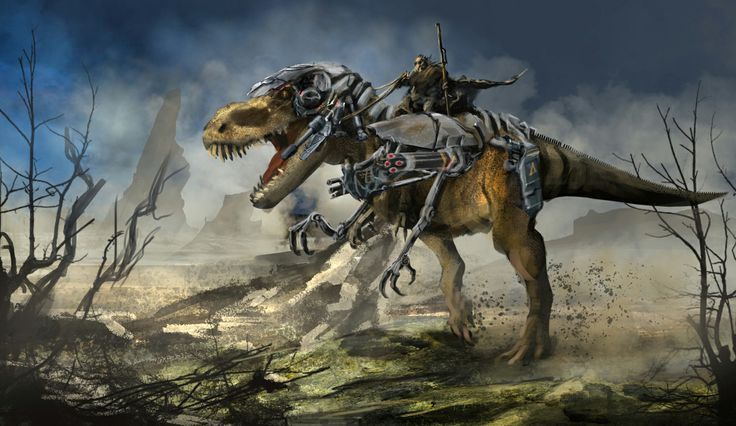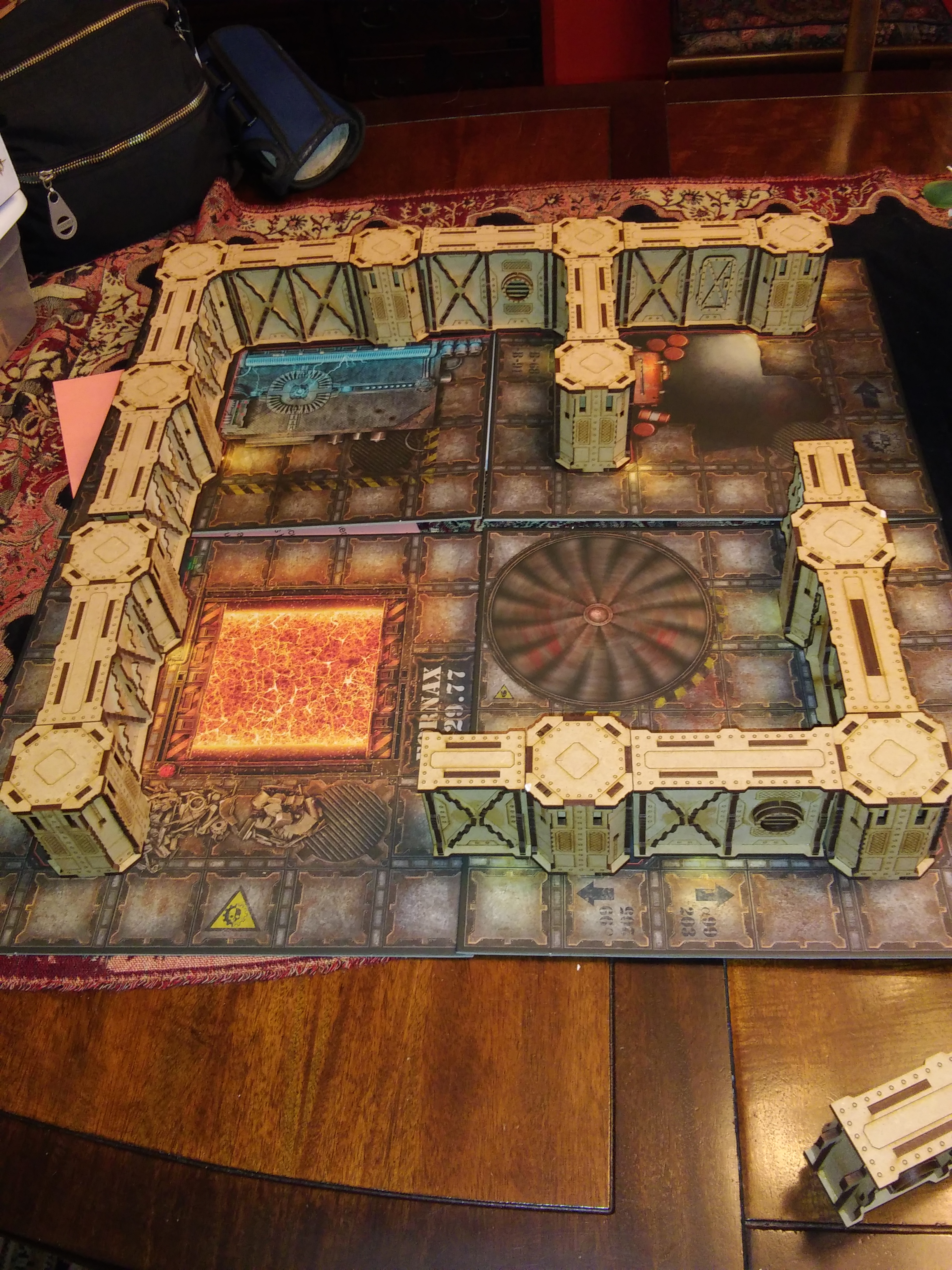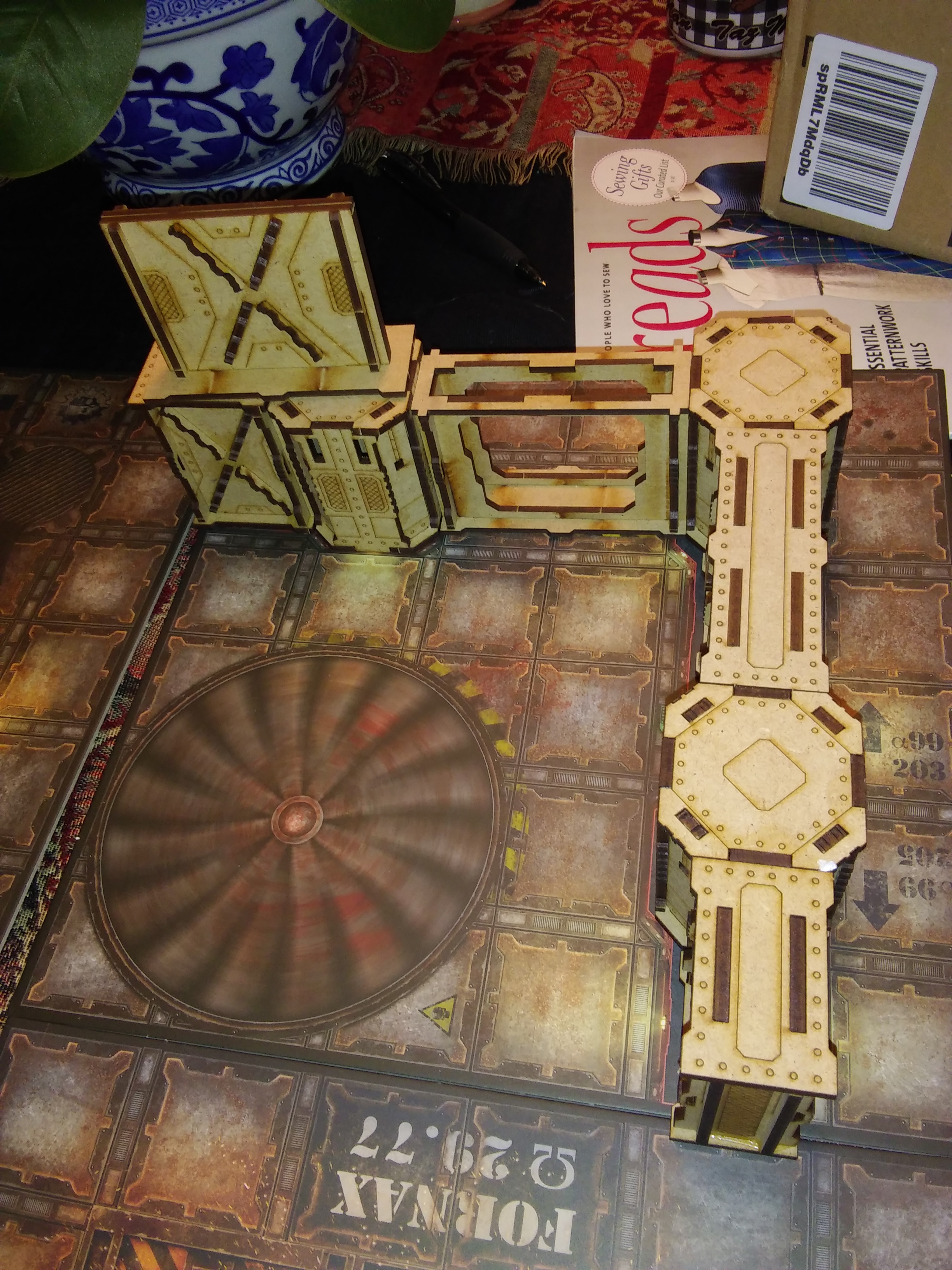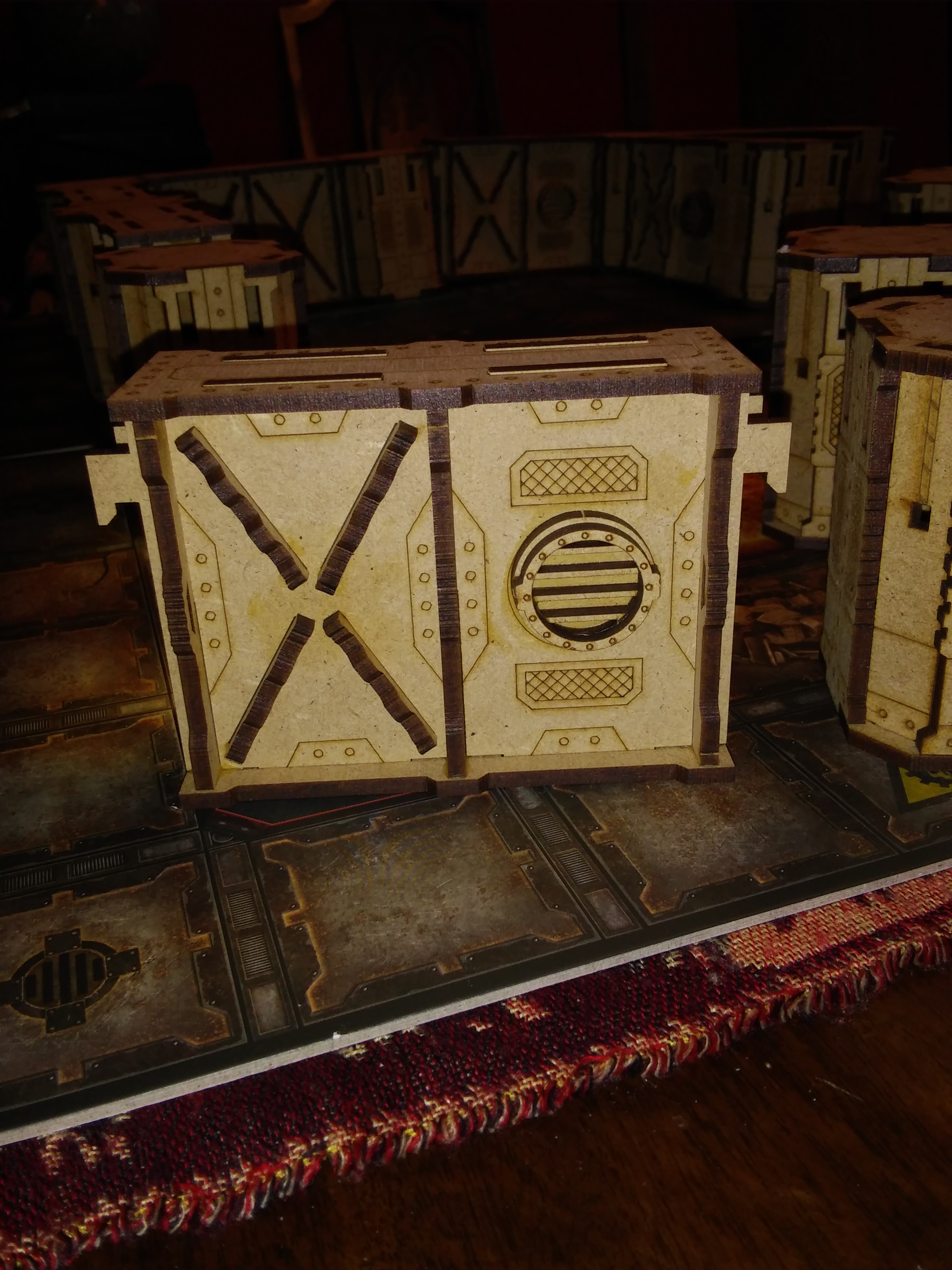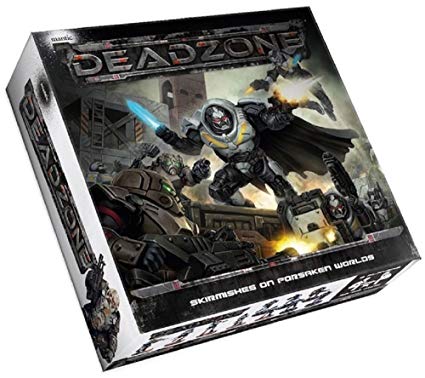
Edit: Deadzone 2.0 PDF rules available here for free.
I recently had a chance to play Mantic Game’s sci-fi skirmish game Deadzone (2nd edition). It combines elements of board games and wargames to create a streamlined and intuitive system.
The two major innovations, as I see them, are the cube system and the dice pool mechanic for resolving conflicts.
A Deadzone board is divided into three inch spaces called “cubes” (because technically they’re 3D). Deadzone terrain is designed to comport with these three inch cubes, creating “stacks.” Distance and weapon range is tracked by counting cubes (as one would count spaces or squares in a board game) instead of measuring inches with a tape measure. A model moving into a cube may be placed anywhere inside it, even slightly over the cube’s border (the center of the model determines which cube it actually occupies).
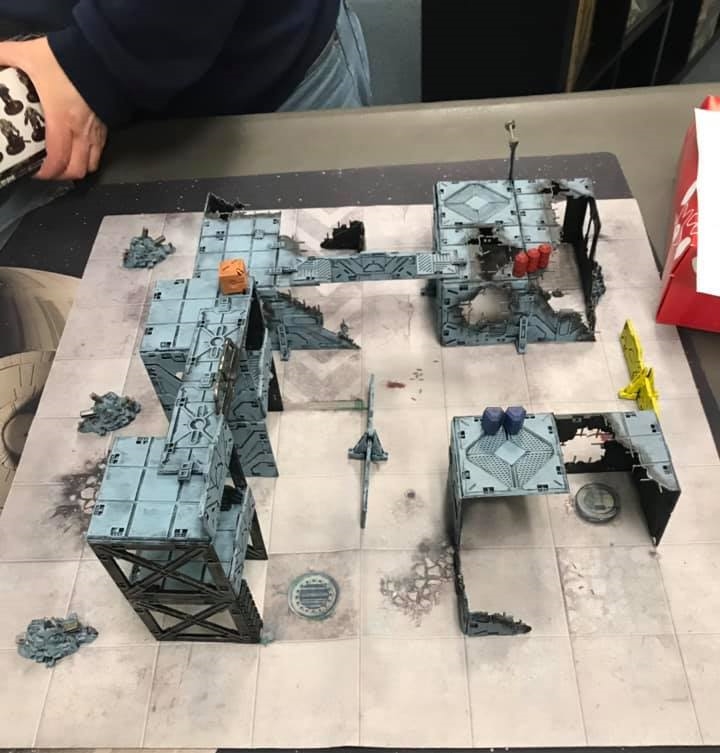
Thanks to my buddy Randy for taking this picture.
The cube system resolves many of the problems I have with more traditional skirmish games like Necromunda and Kill Team. It combines the certainty of grids or spaces with the fluidity of measuring inches on an open board, while also encouraging maneuvering for advantage. It’s bloody genius, as far as I’m concerned.
Deadzone uses an opposed dice pool mechanic to resolve most conflicts. A standard roll is three 8-sided dice; each dice rolling a certain target number is a “success.” Your opponent does the same, and then total successes are compared (ties usually go to the defender). Dice rolls of 8 “explode,” allowing you to roll another dice, and keep doing so as long as you keep rolling 8’s. Modifiers add or subtract dice, rather than changing the target number.
For example, shooting an opposing model requires a test where you’re trying to roll equal to or higher than the model’s Shooting stat (which may be 3+, 4+, 5+, and so on). Your opponent then makes the same test, but using their model’s Survive stat. If the shooter is higher, or if the target model is completely in the open, then the attacker adds bonus dice to their roll (I learned the hard way that controlling the high ground is very important in Deadzone). The number of successes generated are compared to determine the potential damage inflicted on the target.
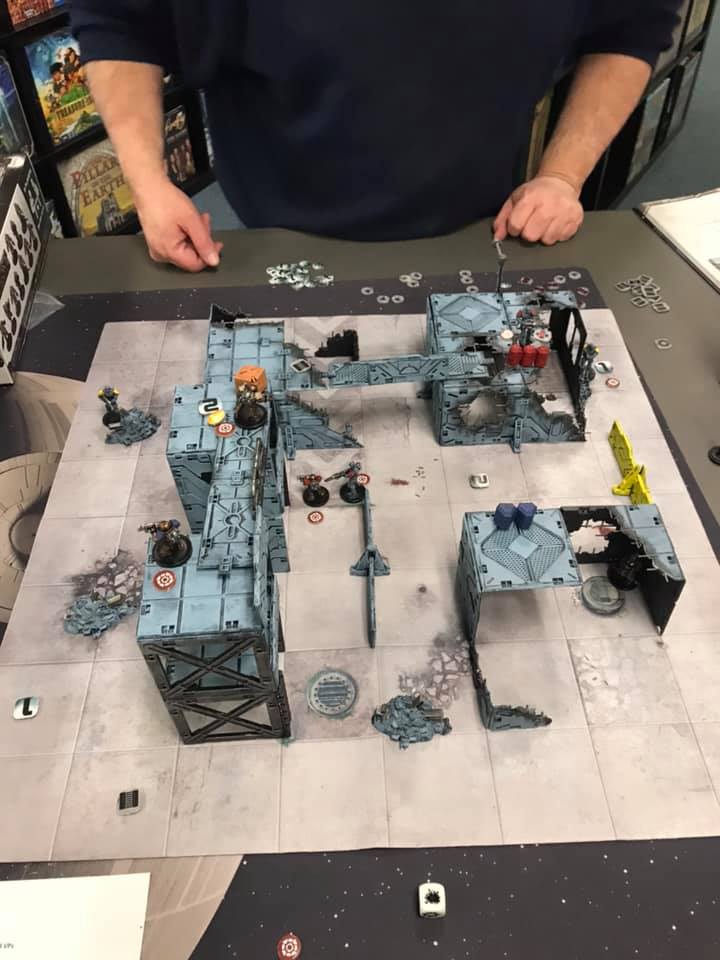
In close combat, the defender may choose to use their Fighting stat, thus having a chance to wound their assailant, or they may just use Survive to simply avoid the attack. But otherwise the dicing mechanic is the same.
What I like about using a dice pool mechanic is instead of 3 or 4 separate dice rolls to resolve an attack, as in most Games Workshop games, everything is reduced to a single opposed dice roll, speeding up the game. Also, the mechanic is just dead simple to remember.
One final note, Deadzone also uses an alternating activation sequence. One player activates a model, then the other player activates a model, back and forth until all models have been activated. I prefer alternating activations because it avoids the situation where one side can blow the other off the table before they can even move (like 8th edition WH40K), and it avoids many of the messy situations created by Kill Team’s hybrid IGOUGO/alternating shooting system.
On the down side, if you’re used to a weightier, crunchier wargame, then Deadzone may be a little too simplistic for your tastes. Also, while Mantic’s models are decent, they still aren’t as nice as GW models. And Mantic doesn’t include instructions for assembling the models, which can be frustrating if you don’t have any experience putting miniatures together.
However, on the whole I’m very impressed with Deadzone and prefer it slightly over Kill Team. And while the rules may be simple (or even simplistic, depending on your point of view), I feel there’s enough complexity there for some nice tactical decision making. And it would be relatively easy to house rule it to add more complexity, if that is what you prefer. Deadzone is also an excellent gateway for first time wargamers. Oh, and did I mention Deadzone is significantly less expensive than similar GW products?
Cheers!
Free Deadzone 2.0 PDF available here for download.
